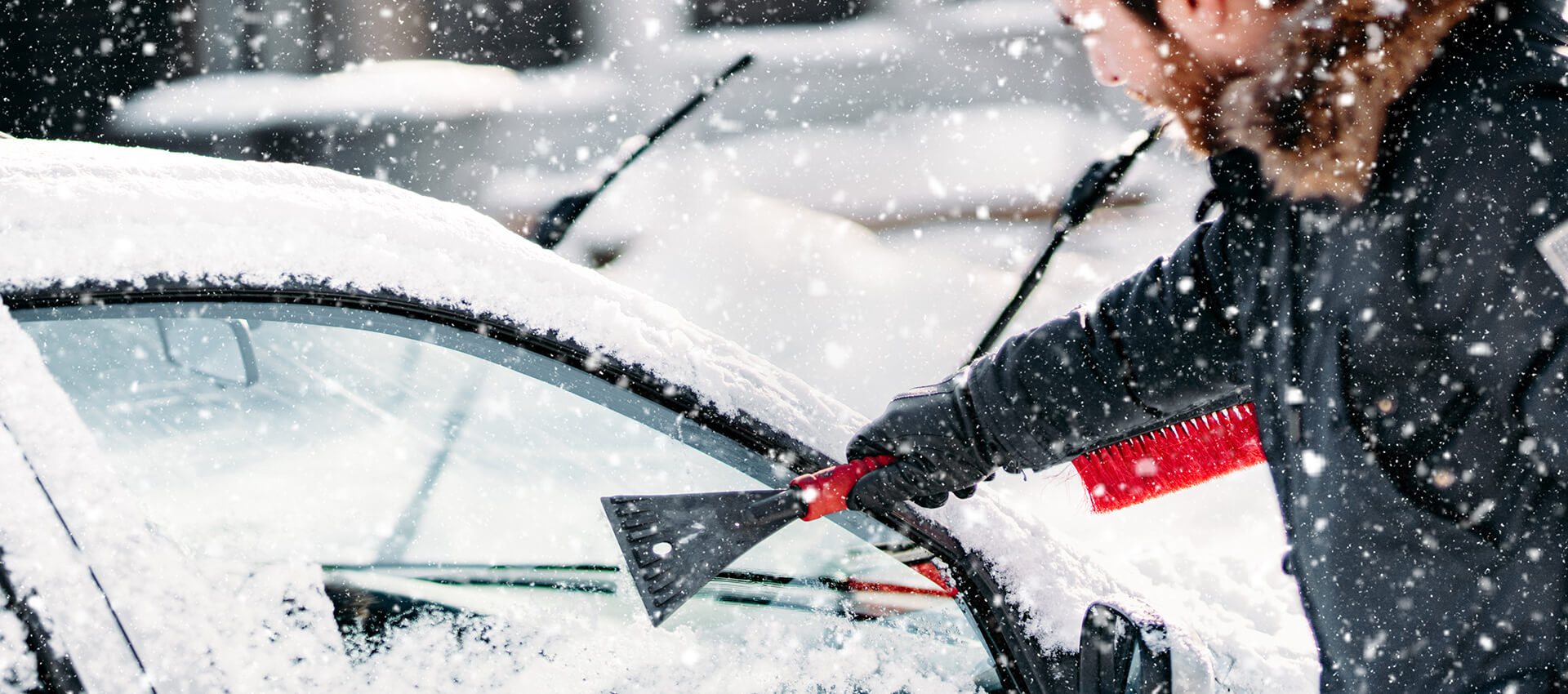Top Tips to Defrost Your Car

You’d think it’s pretty easy to defrost a car, but there are some techniques that could do huge damage
Read on for our top tips to defrost your car…
You’ll need some de-icer & an ice scraper (which we recommend you keep in your car when you’re out and about just in case your car freezes up whilst you’re out).
Step 1: Put on some warm clothes and a pair of gloves to help protect your hands from the cold.
Step 2: Spray de-icer or use an ice scraper to clear the ice/snow from ALL your windows and your side mirrors.
Step 3: Ensure that your lights and number plate are clear of ice/snow.
Step 4: Check that your windscreen wipers are turned off (especially if you have an auto setting). If your wipers are frozen to the glass, you could end up damaging the motor.
Step 5: Start your engine and switch on the heated rear window (and the front heated windscreen if you have one). Run the heaters inside the car, allowing the air-conditioned air to circulate around your car to slowly defrost your windows. Some people prefer to start their engine and get the heaters up and running before spraying the car with de-icer and removing the ice/snow from their windows.
However, you should NEVER leave the keys in the ignition and your car unattended. If you need to go back inside, remove your key and lock your car.
What NOT to do when defrosting your car:
- Do NOT use hot water to defrost your car windscreen – the contrast of cold and hot could smash your window!
- Do NOT attempt to de-ice side windows by opening them, as it can damage the electrics.
- Do NOT drive unless all your windows and mirrors are clear.
- Do NOT drive with snow still on the roof of the car.
- NEVER leave the keys in the ignition if your car is unattended.
- NEVER try to force frozen wipers off the glass.
- DO NOT use your hands to wipe your windows as you’ll leave greasy marks. Always make sure you use a lint-free absorbent cloth.
What does The Highway Code say about defrosting your car?
Rule 229 says that;
Before you set off:
- you MUST be able to see, so clear all snow and ice from all your windows.
- you MUST ensure that lights are clean and number plates are clearly visible and legible.
- make sure the mirrors are clear and the windows are demisted thoroughly.
- remove all snow that might fall off into the path of other road users.
- check your planned route is clear of delays and that no further snowfalls or severe weather are predicted.


